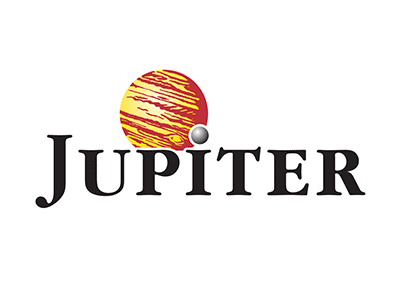Niall Gallagher, Chris Legg and Chris Sellers recently took over management of this fund
The managers have prior experience managing European funds at GAM Investment Management
They’ll continue to use the same investment approach and focus on companies that invest wisely to generate profits
The fund does not currently feature on the Wealth Shortlist of funds chosen by our analysts for their long-term performance potential
How it fits in a portfolio
The Jupiter European fund aims to grow investors’ money over the long run and ahead of its benchmark, the FTSE World Europe ex UK index. The fund’s managers favour larger European businesses, which they believe offer long-term growth potential.
The fund could offer exposure to Europe as part of a long-term global investment portfolio or sit alongside other European funds with different investment styles.
Manager
Niall Gallagher, Chris Legg and Chris Sellers manage this fund. While Legg and Sellers have managed the fund since joining Jupiter in February 2025, Gallagher joined later and has managed the fund with them since May. They took over the fund from previous managers Mark Nichols and Mark Heslop, who have left Jupiter.
The trio previously managed European equity funds at GAM Investment Management, including the GAM Star Continental European Equity and GAM Star European Equity funds, so they have prior experience investing in European companies.
Gallagher managed both GAM funds from December 2009 until January 2025 and previously ran European funds at T. Rowe Price and BlackRock. Sellers became co-manager alongside Gallagher in November 2021 and Legg in November 2022.
While the managers have worked together since 2017, we’d like to see how they settle at Jupiter for a longer period before taking a view.
Process
The managers look for companies that sustainably make profits above the costs required to run the business. They also seek companies that reinvest profits sensibly to grow the business further, acquire other businesses that contribute to sustainable profit growth, or return profits to shareholders through dividends or share buybacks (where a company buys back its own shares and returns the money to shareholders).
The managers start by looking for companies that have made attractive profits in the past. Alongside their own company analysis, they consider the research of ‘expert networks’. Here, they consult with regulators, customers, competitors and other industry experts – the aim is to get a competitive edge over other investment analysts. It also means they get a range of views, helping them to avoid potentially biased views from within a company.
While the managers’ style may be typically defined as a ‘growth’ investment approach, it has elements of ‘value’ investing too. This means they need to be confident a share price is considered good value based on a range of metrics, and that it doesn’t yet reflect the future potential for sustainable profits.
This means the managers currently invest more in areas they believe offer good value, such as financials (including banks) and energy, and less in consumer-related companies that are often in favour with growth investors. At the end of May 2025, the fund had 26.7% invested in the financials sector and, within that, 19.6% in banks. Other notable investments include construction and materials (8.6%), technology (11.9%) and energy (7%).
This is a different approach to the previous managers who tended to prefer more consumer-related or growth companies, with less focus on value. One year ago, the fund had more invested in consumer companies (16.5%), less in financial services (11.8%) and nothing in energy.
The fund’s largest investments currently include chemicals company Linde, airliner Ryanair, and clothing company Inditex. Some of the banks and financial companies held include Italy’s FinecoBank and UniCredit, Spain’s CaixaBank, Finland’s Nordea Bank and Switzerland’s Zurich Insurance Group.
Overall, the managers invest in a relatively small number of companies, which means each one can have a noticeable impact on performance, though this increases risk.
Culture
The fund managers at Jupiter are given autonomy to invest the way they see fit. They believe this will benefit investors over the long run, but this autonomy comes with an appropriate level of challenge from others in the business. This business setup allows the managers to focus on fund management, their team, and maintain flexibility.
Each manager is incentivised in line with the performance of their funds over various timeframes. We think this aligns their interests with those of investors and helps the managers to focus on aiming to deliver strong performance for clients.
ESG integration
Jupiter’s approach to ESG (Environmental, Social and Governance factors) is fund manager led, so the managers themselves are responsible for implementing ESG in their investment decisions. They typically approach ESG issues with a materiality-based approach, meaning they focus on ESG risks most material to each company.
The firm also subscribes to several third-party data providers which offer information that fund managers can use in their research. Where red flags are raised, the managers investigate. Fund managers work closely with central ESG experts on ESG integration, engagement, and proxy voting and the fund managers’ commitment to these topics is a consideration in their annual appraisals.
We like that engagement is not delegated to a separate department. Instead, the fund manager who made the decision to invest in the company leads engagement activity directly, allowing more meaningful and relevant engagement. Note though that this isn’t a specific sustainable invested fund.
Cost
The ongoing annual charge for this fund is 0.99%. This makes it one of the more expensive funds in the European sector. The HL platform fee of up to 0.45% per year also applies, except in the HL Junior ISA, where no platform fee applies.
Performance
During the time the previous managers, Heslop and Nichols, ran the fund from October 2019 to February 2025, the fund grew 32.39% compared with 48.81% for the average fund in the IA Europe ex UK sector. The fund’s quality growth investing style was out of favour for much of this time. Past performance isn’t a guide to future returns.
Since Legg and Sellers joined Jupiter and took over the fund, it hasn’t performed as well as the sector average. March was a more difficult month for many investors and, in the lead up to the announcement of US tariffs from President Donald Trump, companies with higher levels of capital investment suffered. Importantly though, this is a very short time frame on which to judge a fund manager’s performance or stock-picking capabilities, especially during a heightened period of uncertainty and volatility within markets.
During Gallagher’s time at GAM, the GAM Star Continental European Equity fund grew 281.41% compared with 215.72% for the sector. Our analysis shows the managers have good stock-picking abilities, which means they’ve done well at choosing companies that have gone on to perform well regardless of their investment style or the sectors in which they invest.
The fund doesn’t currently feature on the Wealth Shortlist as, while the managers have prior experience, we’d like to monitor the fund, its performance, and how the managers settle at Jupiter for a longer period. There are also other managers in this sector of whom we currently have a more positive view.
Annual percentage growth
30/06/2020 to 30/06/2021 | 30/06/2021 to 30/06/2022 | 30/06/2022 to 30/06/2023 | 30/06/2023 to 30/06/2024 | 30/06/2024 to 30/06/2025 | |
|---|---|---|---|---|---|
Jupiter European | 14.50% | -15.56% | 19.54% | 10.33% | -2.49% |
GAM Star Continental European Equity | 28.32% | -14.74% | 20.83% | 19.77% | 2.50% |
IA Europe Excluding UK | 23.55% | -12.81% | 17.86% | 11.81% | 8.95% |


